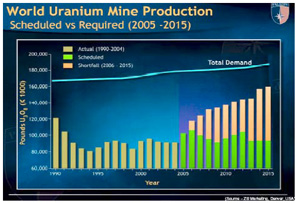
Environmental groups have welcomed the government's opposition to the uranium mine at Angela Pamela, about 20km south of Alice Springs, but question the timing of the announcement.
A by-election will be held in the reasonably safe Country Liberal Alice Springs seat of Araluen on October 9, following the retirement of opposition deputy leader Jodeen Carney.
NT chief minister Paul Henderson said the decision to oppose the mine, having previously granted an exploration licence to Cameco, was due to strong community opposition to the project.
'Labor's Araluen candidate, Adam Findlay, has also been receiving this feedback very strongly while doorknocking in the electorate,' Mr Henderson said in a statement released on Tuesday.
'We also acknowledge Alice Springs is a tourism centre and a mine in such close proximity to the town has the very real potential to adversely affect the tourism market and the Alice Springs economy.
'I reiterate this decision does not mean the Northern Territory Government is opposed to the establishment of new uranium mines elsewhere in the Territory.'
Mr Henderson acknowledged that final approval of a mining lease at Angela Pamela was the responsibility of the federal government, and that the commonwealth had the power to override any decision made by the territory government.
The Australian Conservation Foundation's Dave Sweeney told AAP there was nothing like a bi-election to make the federal and NT governments listen to the concerns of the community.
But he welcomed the announcement, adding that the NT government's change of heart would at least be a 'significant procedural and political road block'.
Australian Greens uranium spokesman Scott Ludlam urged the federal government not to override the wishes of the NT.
'I sincerely hope the Country Liberals will make the sensible decision to support the wishes of the Alice Springs community and join in opposing the mine,' Senator Ludlam said in a statement.
 Australian Uranium News - Research
Australian Uranium News - Research



